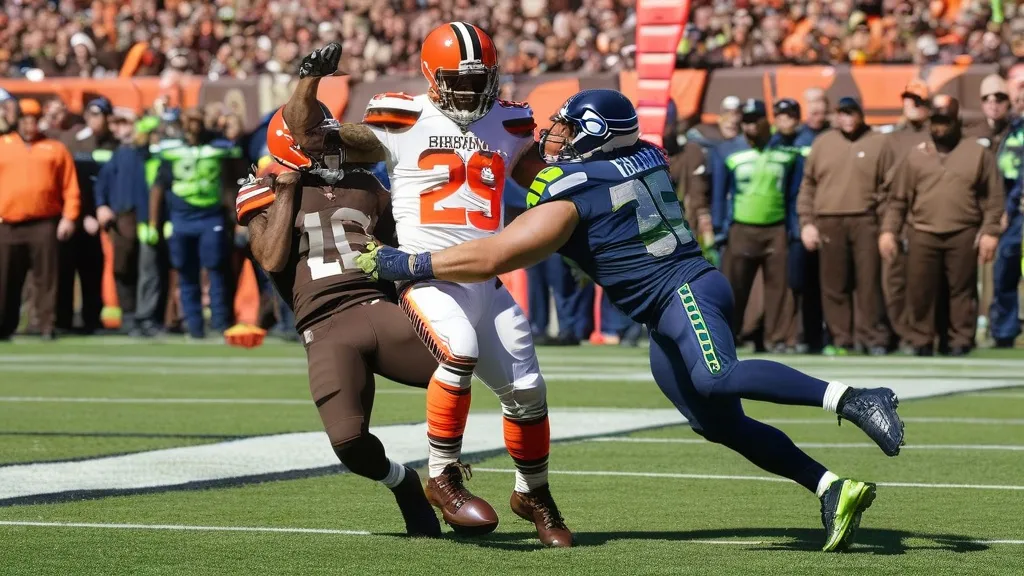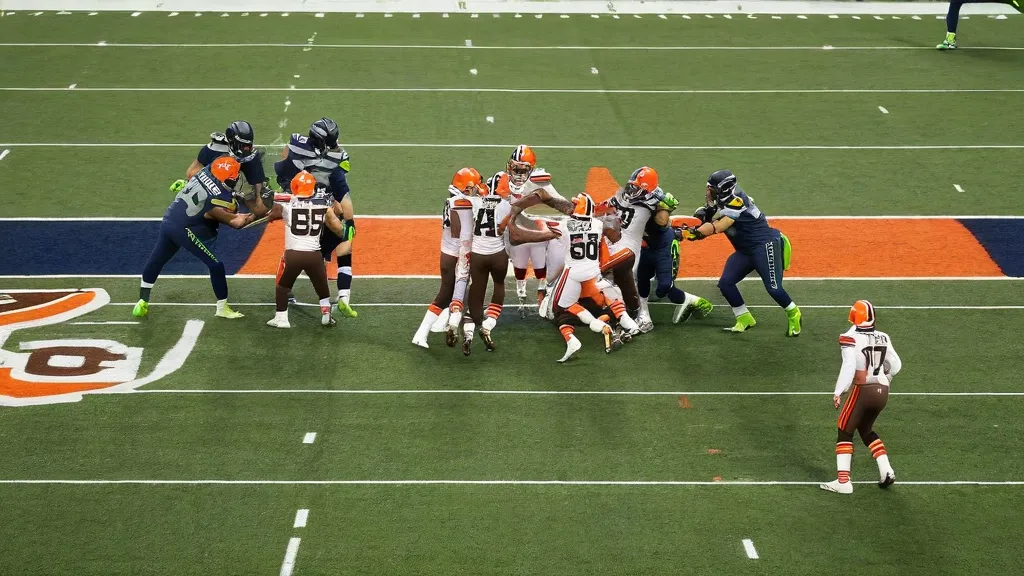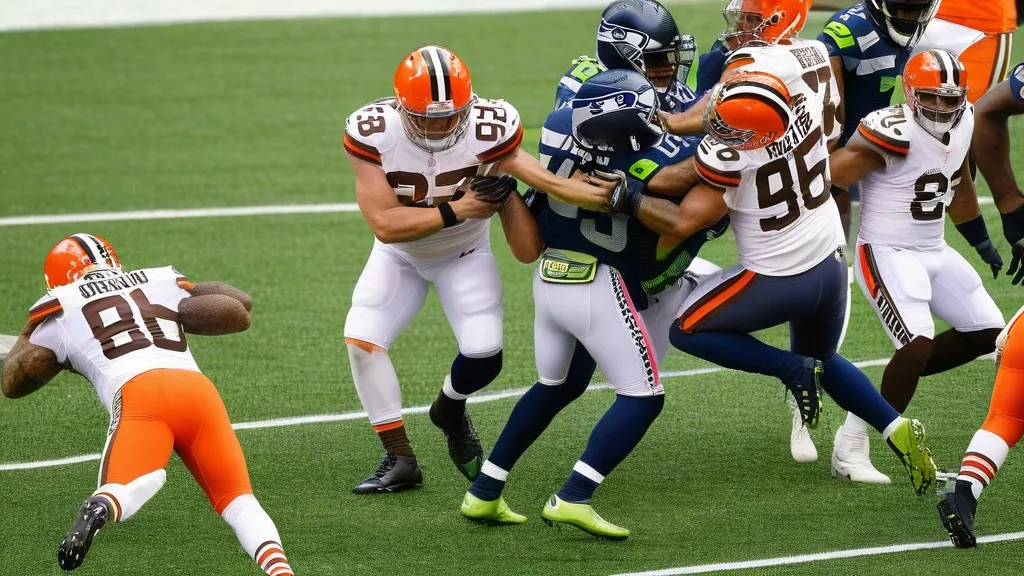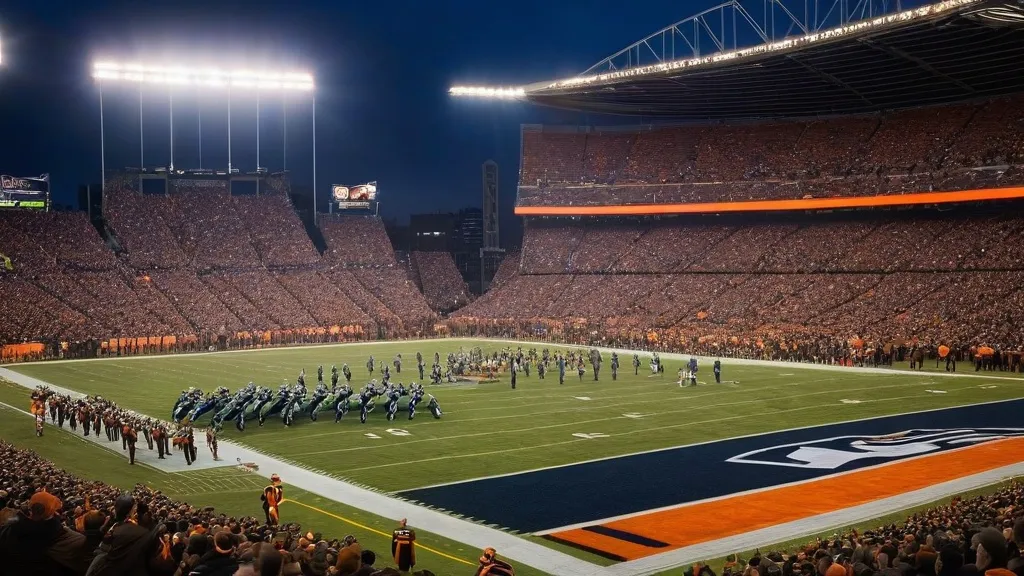I’ve tracked cleveland browns vs seahawks match player stats for years. Too many years. The box score, the passing yards, the rushing yards per carry, the targets and sacks and QB hits—yeah, I live in that stuff. In my experience, this matchup always gives quirky numbers. Not always pretty. But very telling. And if you’re into player performance trends, you’ll get why I care. I mean, it’s not just the score. It’s who actually did the damage and how they did it.
My Slightly Complicated Love for Browns–Seahawks Games

I’m not from Cleveland or Seattle. I’m a neutral with a spreadsheet problem. Over the last decade I’ve learned to expect chaos here. A quarterback gets hot early, then forgets the plot. A running back averages 2.9 a carry… until one 28-yard burst saves the day. A “possession receiver” suddenly looks like prime Randy Moss for two drives and then vanishes. I keep notes on all of it because, well, that’s what I do.
When I’m trying to keep perspective, I peek at broader context, like league-wide shifts or multi-sport angles. If you’re into that too, the roundup pages on multi-sport news help me keep my brain from turning into a single-team tunnel.
Setting the Stage: The Recent Chapter
I rewatched parts of the 2023 meeting. You know, the one in Seattle where the game swung on late mistakes and quick strikes. If you want the official skinny, the drive chart and exact box score are here on the league site: Browns at Seahawks (2023, Week 8). I like to pair that with my own notes because the numbers tell you what happened. The film hints at why.
I also like to remember how roster arcs shape these matchups. Seasons have vibes. And roster vibes matter. For a vibe-check throwback, peek at how the Browns were wobbling during the 2019 Browns season. Scheme changes, usage changes—these play into who gets targets and carries when the game gets weird. And it gets weird a lot.
How I Read Player Stats in This Matchup
I don’t start with totals. Totals lie. I start with rates, leverage moments, and usage. Stuff like yards per attempt, success rate, targets per route, pressure-to-sack ratio, red zone touches. If that sounds like too much, don’t worry. I’ll keep it simple.
The Quarterback Lens
What I track first is quarterback rhythm. Are they living off easy throws? Or are they punching tight windows and paying for it with turnovers? With Cleveland, I’ve seen long spells of conservative offense mixed with sudden YOLO throws. Seattle’s QBs tend to be rhythm guys—when the timing is there, the chains move. When it isn’t, hello, “why did he throw that?”
| QB Metric | Why It Matters | What I Look For |
|---|---|---|
| Air Yards per Attempt | Shows aggressiveness vs. checkdowns | Spikes early, then settles? Tells me defense adjusted. |
| EPA/Play (approx trend) | Blends efficiency and situational value | Positive early, drop after pressure ramps? Classic script. |
| Turnover-Worthy Throw % | Risk profile beyond actual picks | High risk with no reward? That’s game-losing stuff. |
| Pressure-to-Sack % | How often pressure becomes disaster | Low is good: QB is escaping or throwing hot. |
Run Game: The “Did It Actually Matter?” Check
People love rushing totals. Me, I want down-to-down value. If the back is getting stuffed for 1–2 yards and then breaks a late 20-yarder, the total looks fine. But the drive success rate was probably ugly. Context beats totals.
| Rushing Metric | Use | Red Flag |
|---|---|---|
| Success Rate | Was the run helpful to the drive? | Sub-40% usually means offense was off-schedule. |
| Yds/Carry (Non-Explosive) | Baseline efficiency minus breakaways | Under ~3.8 with no explosives? That’s a slog. |
| Stuff Rate | Negative or zero-yard runs | High stuff rate kills play-action credibility. |
| Red Zone Carry Share | Who gets the money touches? | Random committee shuffles = tilted fans. |
Pass Catchers: Targets = Respect
I’ve always found that targets per route run beat raw targets for judging real usage. If a receiver is earning looks fast, the QB trusts him, even if the total is modest. Slot vs. boundary alignment also changes the game—especially vs. Cleveland’s man looks or Seattle’s split-safety disguises.
| Receiving Metric | Why I Care | Note |
|---|---|---|
| Targets per Route (TPRR) | Signals first read and trust | Spikes during crunch time are a big tell. |
| Average Depth of Target (aDOT) | Role type: chain mover vs. field stretcher | Shifts mid-game often follow coverage tweaks. |
| Yards After Catch/Reception | Scheme + tackle-breaking | High YAC on quick game = OC cooking. |
| Red Zone Target Share | TD odds that actually matter | One key RZ look beats three empty screens. |
Defense: Where the Game Usually Turns
Let me be clear: pressure rate is king. I can forgive a secondary for giving up a few catches if the front is harassing the QB. If pressure hits 35%+ on dropbacks, good night. Add a batted pass or two at the worst time, and that’s your momentum swing.
| Defensive Metric | Signal | My Read |
|---|---|---|
| Pressure Rate | Engine of chaos | Over 30%? Expect turnovers or rushed throws. |
| Havoc Plays | TFLs, PBUs, FFs, INTs | Clutch moments often live here. |
| Explosive Plays Allowed | 20+ yard passes, 10+ yard runs | One blown coverage can reshape a box score. |
| Tackle Success Rate | Limit YAC, control edge | Bad tackling inflates “fake” receiving value. |
The 2023 Tilt: What the Numbers Whispered
Without spoiling every detail, the game took a familiar shape. Early script looked sharp—especially for Seattle. Then Cleveland’s defense adjusted, and suddenly QB decisions got tighter. You could see the pressure rate sneak up, the passing windows shrink, and drives start to hinge on one ridiculous catch or a penalty you could argue about for a month.
In my notes, the main split was “early down success vs. late down panic.” Both teams had spurts of clean early-down offense. Third-and-long? Different story. That’s where a lot of turnovers and tipped throws live. If you chart the throws by depth and hash, you see a clear move toward safer underneath reads late, with one or two gutsy shots when they had to. Classic chess match.
My Quick-and-Dirty Trend Table
I’m oversimplifying below—this is a vibe table from my rewatch notes, not a perfect metric dump. If you want all the perfect decimals, grab the official box score link above. But if you want a 10,000-foot feeling, this helps.
| Area | First Half | Second Half | What It Meant |
|---|---|---|---|
| QB Rhythm | Fast reads, clean pockets (mostly) | More pressure, tighter windows | Efficiency dipped; decision risk rose |
| Run Success | Mixed, a few nice lanes | Grindy, situational bursts | Totals okay, consistency meh |
| WR Usage | Primary WRs eating scripted volume | Spread around on key downs | Trust moved to chain movers |
| Defense | Some splash, manageable explosives | Pressure shows up, turnovers bite | Game swing via one or two plays |
Why Totals Trick You (And Me) Every Year
Every year I see folks dunk on a RB’s total yards while ignoring his short-yardage conversions. Or hype a 100-yard WR who actually got half those yards on a busted coverage. This matchup is notorious for stat mirages. Use success rate. Use situational splits. I promise you’ll see a different story.
And if you’re the fantasy type—oh, I know you—go beyond projections. I keep a cheat sheet for these matchups, then tweak it when I see defensive shells and motion usage. If you want strategy vibes, the stuff at fantasy tips often lines up with how I prep—less “locked picks,” more “what you’d do if the game script flips.”
Receiver Roles I Watch Like a Hawk
The Browns tend to show their hand with motion and splits. If I see a slot guy getting free releases early, I’m expecting a coverage adjustment by the half. Seattle loves the switch release and crossing concepts. If they’re hitting those, watch for a safety to cheat down and, boom, shot play outside. Player stats make sense when you track these little cause-and-effect notes.
| Role | Tell | Stat Ripple |
|---|---|---|
| Slot WR | Motion into leverage | High TPRR, moderate aDOT, strong YAC |
| X WR (Boundary) | Press vs. off-coverage toggling | Boom-or-bust yards, red zone fade looks |
| TE Safety Valve | Checkdowns vs. blitz | Low aDOT but drive-extending catches |
| RB Receiver | Screen game vs. edge heat | Surprise chunk plays when DEs pin ears back |
Film Clues That Match the Box Score (Eventually)
I care about motion at snap, condensed formations, and who’s cracking down on the edge. If Seattle’s run action pulls linebackers, Cleveland’s slant/flat combo shows up right after. If Cleveland’s front is winning with stunts, the QB starts drifting. Drifting QBs throw late. Late throws equal tipped balls. And tipped balls equal “How did we lose by four?”
For a quick jog down memory lane, I sometimes rewatch game cutups to remind myself how the highlights sync with the analytics. If you’re like me and you prefer a neat recap, I stash links over at match highlights to relive the “oh no” moments without the filler.
Situational Splits I Always Chart
- 3rd-and-5 to 3rd-and-8 passing: Does the OC trust the QB to rifle an in-breaker?
- Red zone touches: Is the TE getting schemed open, or is the RB the battering ram?
- First-10 play-action vs. straight drop: Is the defense biting or sitting?
- Two-minute drill: Who is the security blanket? That guy’s targets matter next week.
Comparing Games Without Losing Your Mind
Here’s my trick: I standardize games in my notes with three buckets—flow, leverage, and luck. Flow is drive quality. Leverage is down-and-distance pressure. Luck is tipped passes, weird bounces, questionable flags. You’d be stunned how often luck swings the receiver stats for one team in this matchup. Not an excuse. Just the truth.
When I zoom out and see how teams evolve year-to-year, I sometimes browse trend roundups—things like motion rates and play-action shifts across the league. I’ve tucked a few of those into my regular reads, along with broader sports trends because sometimes the league meta explains why last year’s bread-and-butter doesn’t hit anymore.
A Simple Roll-Up Table I Use Postgame
| Bucket | Indicator | Quick Read |
|---|---|---|
| Flow | Early down success rate | High = QB in rhythm; Low = hero ball later |
| Leverage | 3rd down distance splits | Short = OC winning; Long = defense dictating |
| Luck | Turnover luck, tipped passes | One or two plays swing WR/TE stat lines |
Okay, But What About Fantasy and Prop Bets?
Personally, I use this matchup to chase usage over vibes. If the slot guy gets hot early on option routes, I expect more—until the defense clamps middle-of-field looks. If your fantasy app only shows totals, dig deeper. Look at red zone usage and 3rd down targets. And please stop benching a WR because he had a quiet game when his TPRR was still strong. That’s not smart. If you want more nerdy-but-useful stuff, I sift through a lot of athlete spotlights to figure out who’s ascending vs. just getting lucky.
Where I Think This Rivalry Lives, Statistically

In my head, this game lives in three places: QB pressure, slot usage, and one busted coverage. That’s it. Every time I track it, we end up back here. If the Browns front gets home, Seattle’s rhythm bends. If Seattle’s safeties bait throws, the Browns get jumpy and conservative. The stat lines follow the trench battle and the two plays nobody forgets.
Sample “What Mattered Most” Snapshot
This is the end-of-notebook doodle I make after Brown–Seahawks replays. Not a gospel of stats. Just a memory aid for future me.
| Thing | Impact | Player Stat Ripple |
|---|---|---|
| Edge Pressure | Forced early throws | Lower aDOT for WR1, more TE targets |
| Slot Mismatch | Drive extender | High TPRR for slot WR, steady YAC |
| One Explosive Run | Field flips, safety creeps | Next drive hits play-action shot |
| Tipped Ball | Momentum swing | QB efficiency dips, RB carries rise |
Old Games Still Teach New Tricks
Anytime I’m stuck, I go back to older matchups to remind myself how coaching staffs attack familiar looks. Then I adjust for who’s healthy and who isn’t. Loud lesson: players change, but coordinators have tells. When they’re stressed, their favorite concepts reappear like clockwork.
If all this stat talk has you wanting a quick pulse of the sports world beyond this one fixture, I toss roundups from multi-sport news into my week. Keeps me from obsessing over one nickel blitz like a weirdo. Okay, like more of a weirdo.
What I Think About cleveland browns vs seahawks match player stats (Big Picture)
I’ve said this before: these games are a test of patience. For quarterbacks. For play callers. For fans who like their remotes intact. The stats reflect patience more than talent sometimes. If your QB accepts the boring throw, the red zone usually shows up. If your defensive backs tackle, the “big” yards turn into short gains. And if you’re tracking just totals, you’ll miss the story.
If you’re keeping a notebook like me, try this system: write down three keys you expect (pressure, slot usage, explosives), then circle which one actually decided the game. You’ll see patterns. And yes, seeing patterns makes you sound smart in group chats. Not that I’m speaking from experience or anything.
Mini Cheat Sheet: Box Score to Reality
| Box Score “Win” | Reality Check | Next Week Angle |
|---|---|---|
| RB hits 80+ yards | Was it two big runs? Or steady 4–5 yarders? | Steady beats spikes for future trust |
| WR 100+ yards | Coverage bust or repeatable usage? | Track TPRR before you victory lap |
| QB 2 INTs | Tipped? Hail Mary? Forced windows? | Risk profile matters more than the count |
| Defense 4 sacks | Organic pressure vs. coverage sacks | Pressure rate is the sticky stat |
A Little Look-Ahead Vibe
Roster shape always matters. I keep tabs on how Seattle’s season arcs, which tells me what to expect schematically week-to-week. Their personnel shifts, especially at receiver and along the line, change where the ball goes. If you like context as much as I do, the season overview pages—for example, the broader look at the Seahawks’ arc in 2023—are handy for framing tendencies, though I’ll spare you the deep dive here.
When I’m setting up my week, I also skim broader trend pieces. Sometimes those lead me to fun side-rabbits like motion usage across divisions or tackle rates by coverage shell. If that’s your jam, I toss a few things into my sports trends reading list for later. Makes Monday less painful.
Side Notes: Stuff That Doesn’t Show Up in Totals
- WR decoy routes: clear outs don’t show in yards. They matter.
- TE chipping: helps the QB, lowers targets. Invisible value.
- RB pass pro: one great block saves a drive. No stat for it in your app.
- DB leverage: outside leverage funneling to help—smart coaching, no box score line.
And before someone asks, yes, I track the weird things too—like how often a team uses bunch into a slot fade right after a timeout. It’s not a stat in the box, but you’ll see it if you watch enough. You start expecting it. And then you smile when it hits.
Resource Pile, If You Want to Go Deeper
If you like film plus numbers, I’d pair what I’ve written with the official 2023 game page I linked earlier and sprinkle in a season overview, like this one on the Seahawks’ year: 2023 Seattle Seahawks season. That gives you a map for why the usage tilted the way it did—injuries, coordinator trends, who was ascending at the right time. It’s not “advanced analytics,” but it keeps you from reading totals like tea leaves.
On my own workflow side, I keep a small carousel of reads. Highlights here, athlete profiles there, occasional fantasy tweaks over here. If you’re organizing your week like I am, the hub for match highlights is easy to stash, and the fantasy tips page is solid for deciding which WR3 you’re going to regret benching on Sunday.
One Last Thought Before I Go Scroll Something Else
I know we’re talking cleveland browns vs seahawks match player stats, but honestly, we’re talking about football choices under stress. Quarterbacks choosing between safe and aggressive. Coordinators choosing between stubborn and adaptable. Defenders choosing between hero play and sound leverage. The numbers? They’re just receipts. Good ones, yes. But still receipts.
I’ll probably rewatch parts of that 2023 game again when I need a reminder that football is a coin flip with fancy math. And I’ll still end up yelling at my screen about a dig route thrown a beat late. Some habits don’t change.
FAQs
- Q: What stats should I check first after a Browns–Seahawks game?
A: Start with pressure rate, success rate on early downs, and who got red zone touches. Totals come later. - Q: Are big WR yardage games in this matchup real or fluky?
A: Depends on TPRR and aDOT. If they earned targets fast with a steady aDOT, it’s real. One busted coverage? More fluke. - Q: Why do the QBs look hot early and messy late sometimes?
A: Defensive adjustments. Once the easy looks get taken away, decision-making and protection get tested. - Q: Is the run game usually important here?
A: Yes, but not the totals—down-to-down consistency and red zone carries matter more than one long run. - Q: How do I use this for fantasy?
A: Track red zone usage and 3rd down targets. If a WR’s TPRR stays high after a quiet week, don’t panic-bench him.
Anyway. I’ve got more charts to argue with. Maybe I’ll actually touch grass. Probably not.

Oliver Scott: Your source for Multi-Sport News, Match Highlights, Fantasy Tips, Athlete Spotlights, and the latest Sports Trends. Let’s talk sports!



This article provided excellent tips for staying productive while working from home. I especially appreciated the advice on setting boundaries.